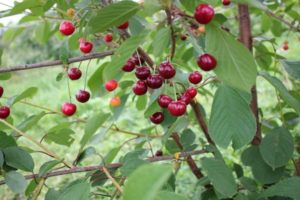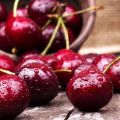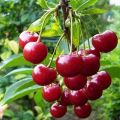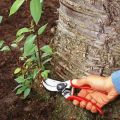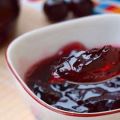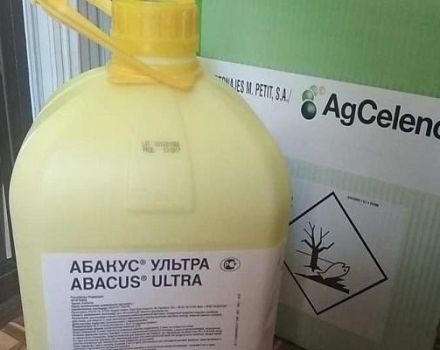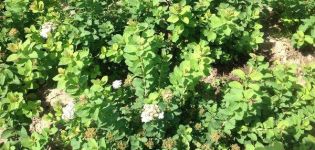Description of the advantages and disadvantages of the Kharitonovskaya cherry variety and the characteristics of the yield
There are many varieties of bush cherry that can be grown in home gardens. But, unfortunately, not all of them meet the requirements of gardeners, some of them are not very productive, while others are too capricious or give small and sour fruits. But all this does not apply to the Kharitonovskaya cherry variety - the result of the work of specialists from the All-Russian Research Institute named after V.I. I. V. Michurin. The culture turned out in the process of crossing cherries of 2 popular varieties - Almaz and Zhukovskaya, and took the best qualities from its "parents".
Description of the variety
Cherry Kharitonovskaya is a low tree, the height of which does not exceed 3 meters, fruiting in large, round, dark red berries with delicate pulp and thin skin. The taste of the fruit is pronounced, sweet, with a pleasant sourness.
In cherries, the stalk is short, it can be easily separated from the twig, but it is more difficult from the berry itself, it is attached to the stone itself. But the pulp easily leaves the seed.The description of the variety indicates Kharitonovka as partially self-fertile. To regularly get a good harvest, you should choose cherries of related varieties with high inter-pollination as neighbors for it. It starts bearing fruit already in the third year after planting.
Planting and leaving
It is recommended to plant Kharitonovka seedlings in the southern regions in September-October, and to the north it is better to plan this event in April. Usually one season is enough for a sprout to take root well.
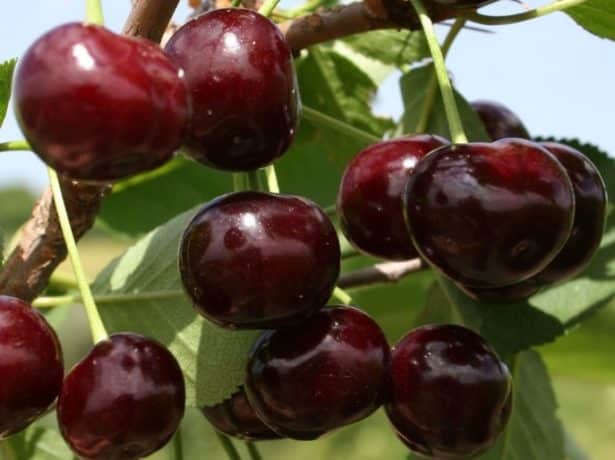
Culture needs care, but if we take into account some of the features, it will not cause much trouble.
Landing
It is recommended to prepare the planting hole at least 4 weeks before planting. It should be remembered that the Kharitonov cherry has a voluminous crown, spherical, it needs space. The distance between the bushes should be at least three meters.
If the soil is acidified, it is advisable to calcify it in advance.
Planting occurs according to the following algorithm:
- A peg is installed in the hole.
- A layer of a mixture of soil extracted from the pit and rotted compost or humus is poured onto the bottom.
- The seedling is placed on a bunch in such a way that after planting the root collar is 2-3 cm above ground level.
- The roots should be carefully straightened.
- The pit is filled with the remaining soil with organic matter.
- The soil in the pit is compacted so that there are no empty areas near the root.
- A young tree needs to be watered well.
- The area around the trunk is mulched, for this you can use peat or humus.
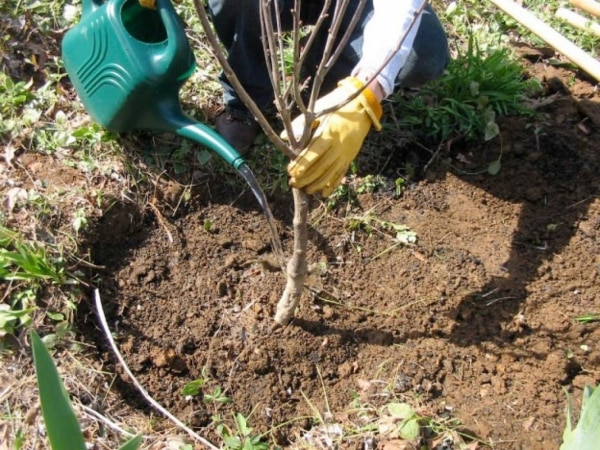
The planting process ends by tying the seedling to a peg.
Fertilizer
In the first couple of years after the cherry planting, it does not need fertilizers: it receives enough nutrition from the fertilizing laid in the planting hole.
In the third year, fertilizers can be applied, but without excessive zeal:
- excess fertilizer reduces the frost resistance of the plant;
- it is enough to apply organic matter under the root once every 3-4 years, it is better to do this during the autumn digging of soil around the trunk;
- every 5 years the tree is fed with chalk, lime, dolomite flour.

For a fruit tree, an infusion of chicken manure is useful - 1 liter of fertilizer per 20 liters of water, infused for 3-5 days. Top dressing should be introduced after watering so as not to burn the planting.
Watering
Initially, the seedling is watered daily, but gradually it takes root, and it will be possible to switch to the regime once every 14 days. Adult cherries are watered no more than 4 times during the season, but this should be done abundantly. It is more convenient to dig furrows around the tree half a meter from the trunk and pour water into them.
Pruning
During planting, the top of the tree is cut at a height of 80 cm, which leads to the appearance of new shoots. Cherries should be pruned every year before buds begin to bloom. If the gardener is late with the procedure, then it is better to postpone it until next year.

Kharitonovka can grow very wide, so shoots that thicken the crown must be removed, the same applies to branches that penetrate and grow inward.
The next year after planting, the shoots are cut to 30% of the total length. And it is better to completely remove the lower shoots, as well as diseased, dried, damaged branches. Slices should be processed immediately with var.
Pest control
Many fruit trees are susceptible to infection with coccomycosis, but this does not apply to the Kharitonovskaya variety, it has increased resistance. The rest of the fungi can infect cherries, so it is worth taking care of prevention - digging the soil in autumn, covering the trunk with lime.
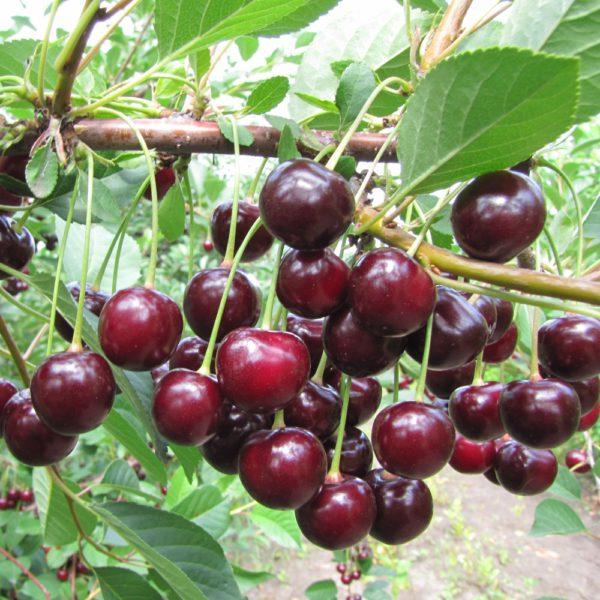
Advantages and disadvantages of bush cherry
This culture has many advantages:
- gives a large yield of fruits with good taste;
- resistant to disease;
- does not require complex maintenance.
If we talk about the shortcomings, then there are few of them - the berry has a large stone, and trees in some regions freeze out.
When in the garden or summer cottage there is not enough bushy fruit tree, which is not just an ornament, but a source of tasty, juicy berries, then you can safely plant Kharitonovskaya cherry.

